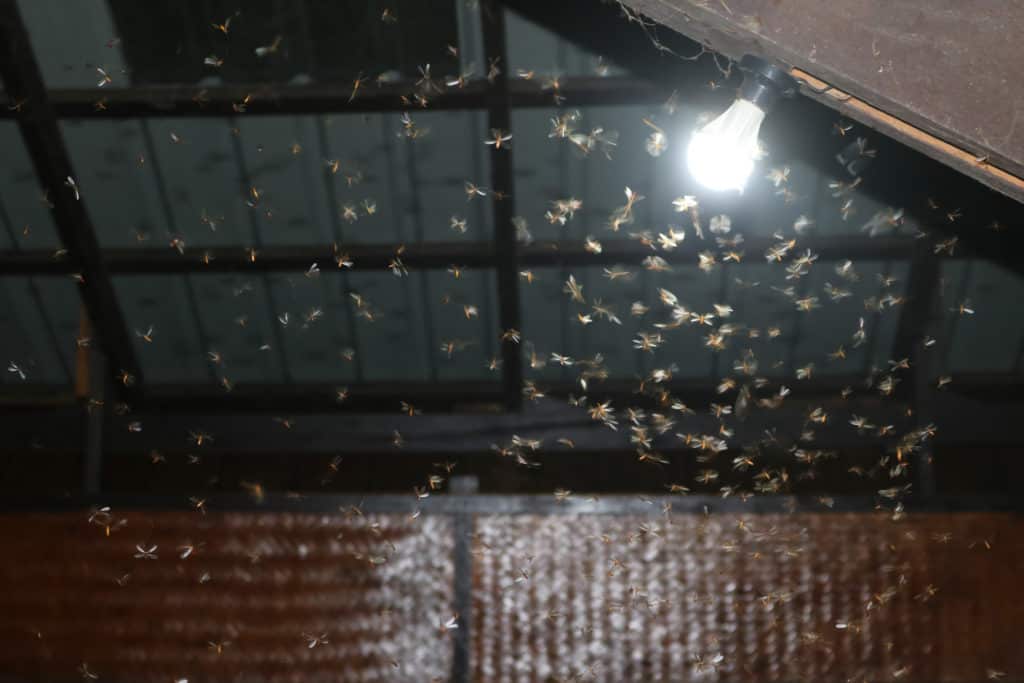Why Do Moth’s Love Light?
Why Do Moth’s Love Light?
What Exactly are Moths?
Moths are flying insects with wings covered in a type of scales, feathery/thread-like antennae, and a coiled straw-like mouth appendage called a probiscis. Similar to butterflies, they belong to the order Lepidoptera and are divided into five different families within that order: Arctiidae, Geometridae, Noctuidae, Saturniidae, and Sphingidae. There’s a total of roughly 160,000 different species within all of the aforementioned families combined and, in the United States alone, nearly 11,000 different species of moths have been identified.

A Fatal Attraction
Often times, flying towards the light can kill a moth. Whether it’s a campfire or bug zapper, the journey is often like a suicide mission. So why do they seem so obsessed with flying directly into something that leads to their death?
The leading theory revolves around “transverse orientation.” This means that moth’s travel by the guiding light of the moon and stars similar to how sailors used to use stars for navigation. The sailors would use constellations in order to figure out what angle to steer their ship. Evolution built moths to be able to inherently implement the same technique, but in a far simpler way. What their evolution could not account for, however, was the introduction of artificial light sources at night.
Not only can artificial light confuse moths, but, in the presence of extremely bright lights or even multiple light sources, their senses can easily be overwhelmed. This accounts for their erratic flying and seemingly senseless “obsession.” They are programed to fly based on very distant light sources, so when they can get super up close to the light, they are quickly disoriented.
While the light sources themselves may not always make the moths’ journeys towards light a one-way-trip, it can make them extremely susceptible to other threats. Predators like bats and frogs can easily pick from the hoard of confused flutterers. Even humans can easily take down the disoriented moths with a fly swatter while they’re so focused and easy to see in the light.
Only time will tell if the moths will once again evolve to no longer fall pretty to this fatal attraction.

Citations
Carter, David. 1992. Butterflies and Moths (Eyewitness Handbooks). Dorling Kindersley, Inc., New York.
Covell, C. V., Jr. 1984. A Field Guide to the Moths of Eastern North America. Houghton Mifflin, Boston.
Hertzberg, R. (2018) Why Moths are Obsessed with Lamps. National Geographic. Available at: https://www.youtube.com/watch?v=Ul9HIX9YBbM (Accessed: September 2020).
Hodges, R. W. 1971. The Moths of America North of Mexico. Fascicle 21: Sphingoidea. Curwen Press, London.
8 Creative Ways to Have a Pest-Free Fourth of July
8 Creative Ways to Have a Pest-Free Fourth of July 8 Creative Ways to Have a Pest-Free Fourth of July Summary: The Fourth [...]
A Simple Guide to Preventing Stinging Pests
A Simple Guide to Preventing Stinging Pests A Simple Guide to Preventing Stinging Pests Summary: Stinging insects are more active in warm weather, [...]
These 10 Natural Mosquito Repellents Can Actually Help
These 10 Natural Mosquito Repellents Can Actually Help These 10 Natural Mosquito Repellents Can Actually Help Summary: Natural mosquito repellents are easier to [...]
How to Get Rid of Carpet Beetles
How to Get Rid of Carpet Beetles How to Get Rid of Carpet Beetles Summary: Carpet beetles are sneaky pests that don’t usually [...]
How Do Roaches Affect Asthma and Allergies?
How Do Roaches Affect Asthma and Allergies? How Do Roaches Affect Asthma and Allergies? Summary: It’s no secret that pests impact human health, [...]
These 5 Carnivorous Pests Might Surprise You!
These 5 Carnivorous Pests Might Surprise You! These 5 Carnivorous Pests Might Surprise You! Summary: There are many eco-friendly ways to prevent pests, [...]

